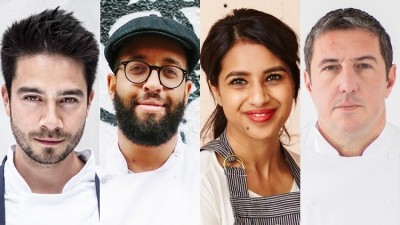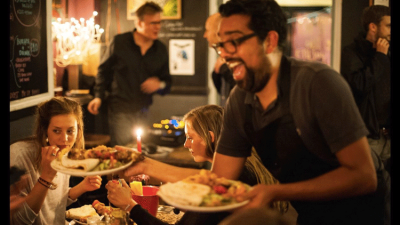"It is different from molecular gastronomy, it is about a passion for colour": Jeremy Chan on Ikoyi

Jeremy Chan was speaking at Restaurant magazine's Restaurant Congress 2018 last month
"Restaurants in London are very concept driven and defined by cuisine and genres. We could go to a landlord and say we want to cook beautiful food, but they wouldn’t want that, so we had to come up with a narrative for a west African and Nigerian restaurant, which got us into a lot of meeting with landlords.
That narrative helped us launch Ikoyi (in St James’s Market). People were talking about African cuisine as the next big thing. It was really helpful because when we opened we were busy with African and Nigerian people and the food critics wanting to discover new things, but it was harmful in a way as we were not creating dishes that these people were eating. People were coming with expectations about the food, asking ‘was I African?’, ‘is this traditional?’. We were consciously trying to be creative and get people through the door and come with an open mind.
The idea of hyper definition and concepts can limit creativity because you have to cook within someone’s expectations and stereotypical idea of what a cuisine might be, which is not what we do at all. We don’t cook for anyone’s expectations but our own, making something truly unique and original. There are three main things at Ikoyi that drive the process.
The first is ingredient exploration, looking at an ingredient and completely stripping it of its culture and tradition and understanding how it tastes – whether umami or aromatic – and its potential for deliciousness. We have amassed lists of many different ingredients from the west African regions. Some are more challenging than others, like the bush mango seed from Nigeria. It is super pungent, it smells like burnt cheese and has a viscus slimy texture.
For westerners something cheesy and slimy can be off putting, but we use it as a dessert and create a kind of caramel. It’s the only other place you’ll find it outside of a Nigerian home cook’s stew. It’s about keeping an open mind – not looking at tradition but the ingredient’s potential for application in gastronomy and cooking.
The second is the idea of flavour optimisation, which is a technical and pretentious way of making things delicious. This is what every chef does but we try and put a formal language into this idea so it gives us certain principles and structures to follow so our food is consistent in its level of depth and flavour.
One of the key reasons we started looking at west African ingredients is because the pantry is so vast, some ingredients contain overpowering umami – way more than in Japanese and Chinese cuisine – which are overlooked because they are so pungent.
Fermented locust bean, for example, smells like the sweatiest feet you could ever imagine – are we really cooking these beans and serving them in a restaurant in Piccadilly? But we harness the flavours and create a kind of west African black bean sauce, which is delicious and smoky.
The third is distinctive aesthetics. Again, this is just an esoteric way for saying something looks good and is original. For us it is about colours and textures. When a guest is confronted with a dish it stimulates them, but intrigues them. Why is this dessert black? It adds to the experience.
In our plantain dish the plantain is completely red, it is inspired by the rough surface of Mars. It looks spicy but the redness comes from raspberries and it is very tart and fresh. Its matte surface is in contrast with the emulsion served with it, made from scotch bonnet chillies. We want the guest to react in a fun way and challenge the expectations of what food should look like and how it should make you feel. It is different from molecular gastronomy, it is about a passion for colour.”


















